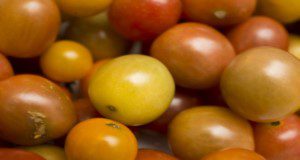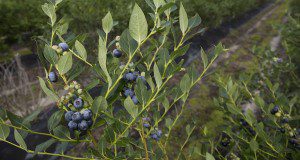Herbicide resistance was historically not a significant issue in most horticultural crops because few herbicides were applied. Close proximity of agronomic crops and the loss of methyl bromide has led to a gradual increase in herbicide inputs and the increased occurrence of herbicide-resistant weeds in tomato fields. Very few herbicides are registered for tomato, and resistance is a major concern. This new 11-page publication of the UF/IFAS Horticultural Sciences Department provides a definition of herbicide resistance, explains how it develops, and provides management recommendations for tomato growers. It was written for growers and Extension agents, but the information may be of interest to anyone concerned about herbicide resistance in vegetable and small fruit crops. Written by Shaun M. Sharpe, Nathan S. Boyd, Ramdas G. Kanissery, and Peter J. Dittmar.
https://edis.ifas.ufl.edu/hs1398
Tag: Peter J. Dittmar
Calendar for Southern Highbush Blueberry Management in Florida
Southern highbush blueberries (SHB) are commercially grown throughout Florida in both deciduous and evergreen systems. This calendar addresses general management requirements on a monthly basis for conventional (nonorganic) systems and should be used in coordination with other UF/IFAS EDIS publications. This new 7-page article, published by the UF/IFAS Horticultural Sciences Department, was written by Douglas A. Phillips, Jeffrey G. Williamson, Philip F. Harmon, Oscar E. Liburd, and Peter J. Dittmar.
https://edis.ifas.ufl.edu/hs1363
Seed Piece Spacing Adjustment for Florida Chipping Potato
Seed spacing directly affects crop revenue because the number of potato seeds planted determines the final plant population density. The analysis presented in this 5-page publication was extracted from a series of field trials that looked at improved potato plant arrangement in the field by adjusting seed piece spacing for Florida growing conditions. Written by Fernanda Souza Krupek, Steven A. Sargent, Peter J. Dittmar, and Lincoln Zotarelli and published by the UF/IFAS Horticultural Sciences Department, May 2018.
http://edis.ifas.ufl.edu/hs1317
2016 Florida Blueberry Integrated Pest Management Guide
This 37-page fact sheet provides extensive information about integrated pest management for growing blueberry plants in Florida. Writteny by Jeffrey G. Williamson, Philip F. Harmon, Oscar E. Liburd, and Peter Dittmar and published by the Horticultural Sciences Department.
http://edis.ifas.ufl.edu/hs380
Summer Squash Production in Miami-Dade County, Florida
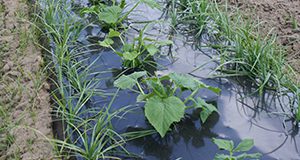
Summer squash is an important vegetable crop in Miami-Dade County. It is grown annually on about 6,000 acres and sold nationwide during the winter in the fresh market. This 16-page fact sheet describes the varieties of summer squash, land preparation and transplanting, what fertilizer to use, irrigation and freeze protection, disease management, insect management, weed management, harvest, and crop rotation. Written by D. Seal, S. Zhang, M. Ozores-Hampton, P. Dittmar, Y. Li, W. Klassen, Q. Wang, and T. Olczyk and published by the Horticultural Sciences Department.
http://edis.ifas.ufl.edu/tr012
Potato Vine Killing or Desiccation

Proper tuber maturity at harvest is an important factor in producing high-quality fresh-market potatoes. Tuber maturity is generally recognized as an important determinant of storage ability and cooking quality. Maturation can be artificially induced by killing the potato vines prior to harvest. This will benefit tuber appearance, limit tuber size, and improve tuber release from the vine. This four-page fact sheet describes the importance of tuber maturation, potato vine killing timing and available methods, and how to determine when to vine kill and when to harvest after vine kill. Written by Lincoln Zotarelli, Steven Sargent, Peter Dittmar, and Mildred Makani, and published by the Horticultural Sciences Department.
http://edis.ifas.ufl.edu/hs181
Weed Management Principles in Commercial Vegetable Production
 Weeds compete with vegetable crops for light, water, and nutrients. This competition decreases plant vigor, yield, and crop quality. They interfere with hand harvest and can complicate or prevent machine harvest. Weeds also serve as alternative hosts to diseases, viruses, and nematodes. A successful weed management program will incorporate multiple control practices with preventative, cultural, biological, mechanical, and chemical methods.
Weeds compete with vegetable crops for light, water, and nutrients. This competition decreases plant vigor, yield, and crop quality. They interfere with hand harvest and can complicate or prevent machine harvest. Weeds also serve as alternative hosts to diseases, viruses, and nematodes. A successful weed management program will incorporate multiple control practices with preventative, cultural, biological, mechanical, and chemical methods.
This 6-page fact sheet was written by Peter Dittmar and Nathan Boyd, and published by the UF Department of Horticultural Sciences, July 2014.
http://edis.ifas.ufl.edu/cv113
Calibration of Chemical Applicators Used in Vegetables (HS1220)
 Calibration is the process used to determine the amount of chemical material applied per unit area. Equipment for applying liquid and dry materials must be accurately calibrated for pesticides to work efficiently and to avoid crop injury or death. The pesticide label is a legal document and must be followed. Properly calibrating equipment ensures the product is being applied as specified on the label and that environmental contamination will be minimized. This 6-page fact sheet discusses some methods for calibration of sprayers and dry material spreaders and includes information about calibration to help growers properly apply pesticides. written by M. R. Miller and P. J. Dittmar, and published by the UF Department of Horticultural Sciences, May 2013.
Calibration is the process used to determine the amount of chemical material applied per unit area. Equipment for applying liquid and dry materials must be accurately calibrated for pesticides to work efficiently and to avoid crop injury or death. The pesticide label is a legal document and must be followed. Properly calibrating equipment ensures the product is being applied as specified on the label and that environmental contamination will be minimized. This 6-page fact sheet discusses some methods for calibration of sprayers and dry material spreaders and includes information about calibration to help growers properly apply pesticides. written by M. R. Miller and P. J. Dittmar, and published by the UF Department of Horticultural Sciences, May 2013.
http://edis.ifas.ufl.edu/hs1220
Factors Affecting Herbicide Use in Fruits and Vegetables (HS1219)
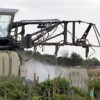 Proper herbicide application is critical for fruit and vegetable growers to effectively manage weeds. Improper herbicide application may lead to herbicide loss from the targeted area, increased crop injury, and reduced weed control. Growers need to take into account a number of factors before and during application in any crop to ensure the herbicide is effective. Herbicide efficacy is greatly affected by timing and environmental conditions. Although complete weed control is not always possible, even slight reductions in weed populations can greatly enhance productivity in fruit and vegetable crops. This 4-page fact sheet reviews techniques and processes to help growers properly apply herbicides. Understanding the processes and applying the following techniques will help to increase the overall efficacy of herbicides in fruit and vegetable production. Written by C. E. Rouse and P. J. Dittmar, and published by the UF Department of Horticultural Sciences, May 2013.
Proper herbicide application is critical for fruit and vegetable growers to effectively manage weeds. Improper herbicide application may lead to herbicide loss from the targeted area, increased crop injury, and reduced weed control. Growers need to take into account a number of factors before and during application in any crop to ensure the herbicide is effective. Herbicide efficacy is greatly affected by timing and environmental conditions. Although complete weed control is not always possible, even slight reductions in weed populations can greatly enhance productivity in fruit and vegetable crops. This 4-page fact sheet reviews techniques and processes to help growers properly apply herbicides. Understanding the processes and applying the following techniques will help to increase the overall efficacy of herbicides in fruit and vegetable production. Written by C. E. Rouse and P. J. Dittmar, and published by the UF Department of Horticultural Sciences, May 2013.
http://edis.ifas.ufl.edu/hs1219
Manejo de malezas en las papas (HS1213)
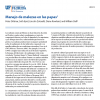 Las malezas causan problemas en la producción de patata en Florida y puede reducir rendimientos a través de competencia directa por la luz, la humedad y los nutrientes, o por albergar insectos y enfermedades que atacan las patatas. This 4-page fact sheet was written by Peter Dittmar, Seth Byrd, Lincoln Zotarelli, Diane Rowland, and William Stall, and published by the UF Department of Horticultural Sciences, January 2013.
Las malezas causan problemas en la producción de patata en Florida y puede reducir rendimientos a través de competencia directa por la luz, la humedad y los nutrientes, o por albergar insectos y enfermedades que atacan las patatas. This 4-page fact sheet was written by Peter Dittmar, Seth Byrd, Lincoln Zotarelli, Diane Rowland, and William Stall, and published by the UF Department of Horticultural Sciences, January 2013.
http://edis.ifas.ufl.edu/hs1213
Diagnosing Herbicide Injury in Corn (SSAGR365/AG374)
 This 9-page fact sheet lists nine modes of action: the mechanism of action, behavior in plants, symptoms and herbicides, and illustrations. Written by Sarah Berger, Jason Ferrell, and Peter Dittmar, and published by the UF Department of Agronomy, January 2013.
This 9-page fact sheet lists nine modes of action: the mechanism of action, behavior in plants, symptoms and herbicides, and illustrations. Written by Sarah Berger, Jason Ferrell, and Peter Dittmar, and published by the UF Department of Agronomy, January 2013.
http://edis.ifas.ufl.edu/ag374
2013 Florida Blueberry Integrated Pest Management Guide (HS1156/HS380)
 Recommendations are based on information from the manufacturer’s label and performance data from research and Extension field tests. This 31-page pest management guide was adapted for Florida by Jeffrey G. Williamson, Philip F. Harmon, Oscar E. Liburd, and Peter Dittmar, from the Southeast Regional Blueberry Integrated Management Guide, and published by the UF Department of Horticultural Sciences, November 2012.
Recommendations are based on information from the manufacturer’s label and performance data from research and Extension field tests. This 31-page pest management guide was adapted for Florida by Jeffrey G. Williamson, Philip F. Harmon, Oscar E. Liburd, and Peter Dittmar, from the Southeast Regional Blueberry Integrated Management Guide, and published by the UF Department of Horticultural Sciences, November 2012.
http://edis.ifas.ufl.edu/hs380
Weed Control in Carrot (HS201/WG026)
 Weeds reduce carrot yields by reducing the size of carrot roots through direct competition for nutrients, space, and water. Weeds also deform carrot roots, making them unmarketable. Weeds late in the season may also cause severe harvesting problems. This 3-page fact sheet was written by Peter J. Dittmar and William M. Stall, and published by the UF Department of Horticultural Sciences, June 2012.
Weeds reduce carrot yields by reducing the size of carrot roots through direct competition for nutrients, space, and water. Weeds also deform carrot roots, making them unmarketable. Weeds late in the season may also cause severe harvesting problems. This 3-page fact sheet was written by Peter J. Dittmar and William M. Stall, and published by the UF Department of Horticultural Sciences, June 2012.
http://edis.ifas.ufl.edu/wg026
Weed Management in Pecan (HS95/WG022)
 Weeds compete with pecan trees for light, nutrients, and water. Weed interference can be minimized with proper cultural practices and herbicides. This 5-page fact sheet was written by Peter J. Dittmar and Jeffrey G. Williamson, and published by the UF Department of Horticultural Sciences, March 2012.
Weeds compete with pecan trees for light, nutrients, and water. Weed interference can be minimized with proper cultural practices and herbicides. This 5-page fact sheet was written by Peter J. Dittmar and Jeffrey G. Williamson, and published by the UF Department of Horticultural Sciences, March 2012.
http://edis.ifas.ufl.edu/wg022
Weed Management Guides: Blueberry, Nectarine, and Plum
These 6-page fact sheets were written by Peter J. Dittmar and Jeffrey G. Williamson, and published by the UF Department of Horticultural Sciences, February 2012.
Weed Management in Peach (HS93/WG020)
 Proper weed management is important for a healthy peach orchard. Peach trees and weeds compete for water, nutrients, and light. And they serve as hosts for insects that cause catfacing and nematodes that carry viral diseases. This 6-page fact sheet was written by Peter J. Dittmar and Jeffrey G. Williamson, and published by the UF Department of Horticultural Sciences, January 2012.
Proper weed management is important for a healthy peach orchard. Peach trees and weeds compete for water, nutrients, and light. And they serve as hosts for insects that cause catfacing and nematodes that carry viral diseases. This 6-page fact sheet was written by Peter J. Dittmar and Jeffrey G. Williamson, and published by the UF Department of Horticultural Sciences, January 2012.
http://edis.ifas.ufl.edu/wg020
Weed Management in Pear (HS94/WG021)
 Weeds compete with pear trees for light, nutrients, and water. Weed interference can be minimized with proper cultural practices and herbicides. General maintenance, such as controlling weeds in adjacent areas, preventing weeds from producing seeds, and cleaning mowing equipment of weed seed, will prevent weeds from becoming a serious problem. This 6-page fact sheet includes recommendations for herbicides labeled for pear in Florida. Written by Peter J. Dittmar and Jeffrey G. Williamson, and published by the UF Department of Horticultural Sciences, December 2011.
Weeds compete with pear trees for light, nutrients, and water. Weed interference can be minimized with proper cultural practices and herbicides. General maintenance, such as controlling weeds in adjacent areas, preventing weeds from producing seeds, and cleaning mowing equipment of weed seed, will prevent weeds from becoming a serious problem. This 6-page fact sheet includes recommendations for herbicides labeled for pear in Florida. Written by Peter J. Dittmar and Jeffrey G. Williamson, and published by the UF Department of Horticultural Sciences, December 2011.
http://edis.ifas.ufl.edu/wg021
Weed Management Guide: Apple, Blackberry, Grape, and Okra
The following fact sheets in the Weed Management Guide have been updated with new recommendations:
Weed Management in Apple (HS88/WG014)
Weed Management in Blackberry (HS89/WG015)
Weed Management in Grape (HS91/WG018)
Weed Management in Okra (HS192/WG032)
